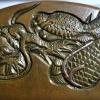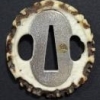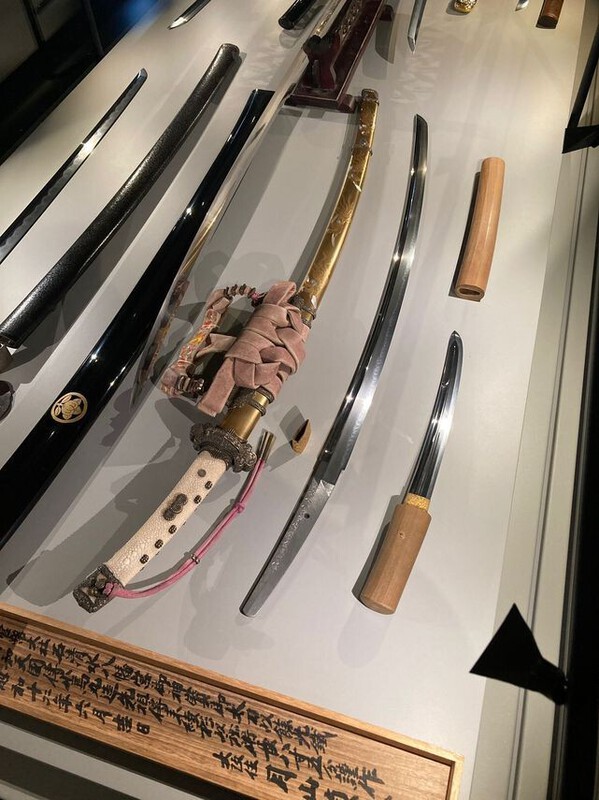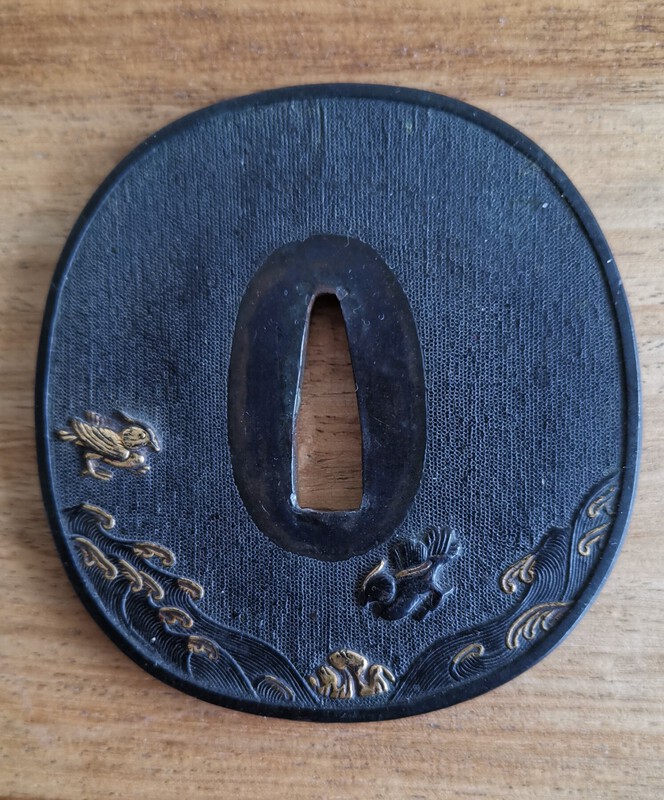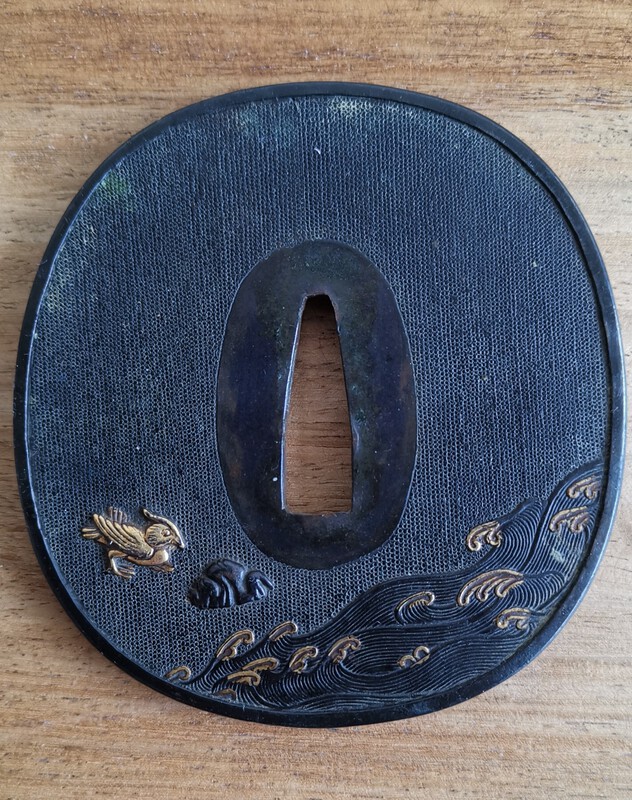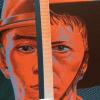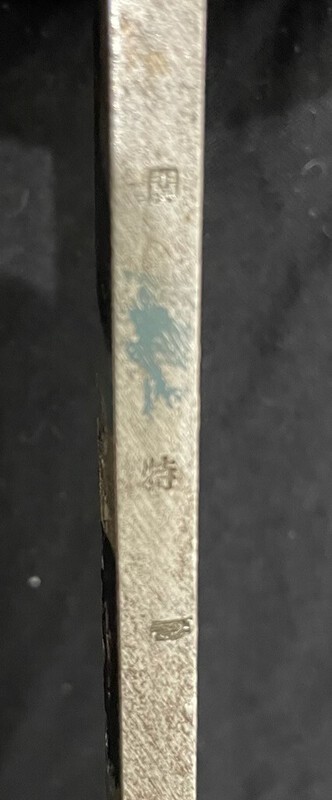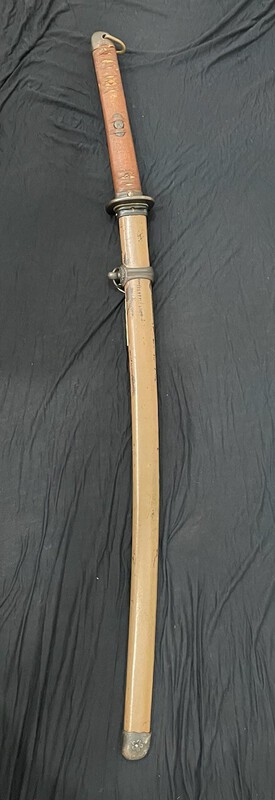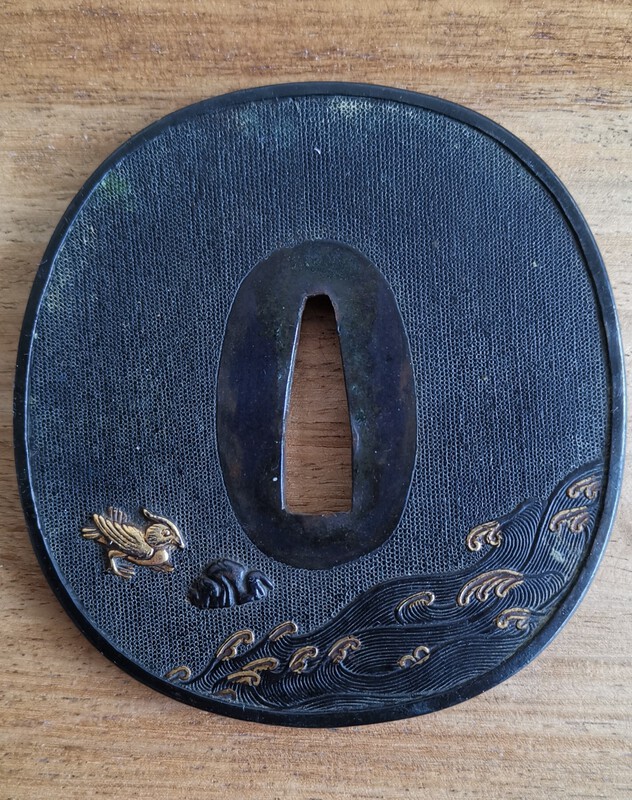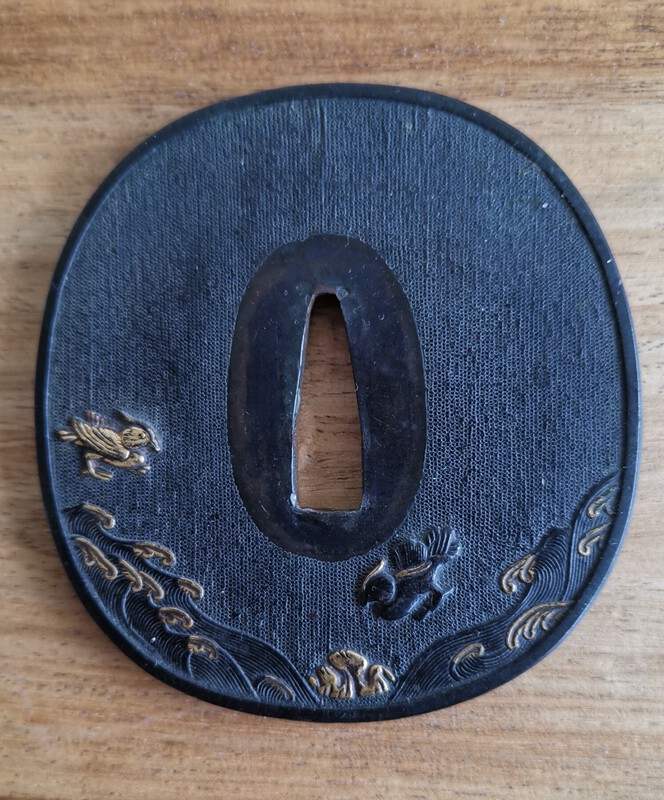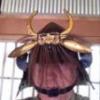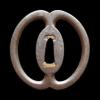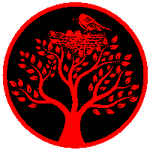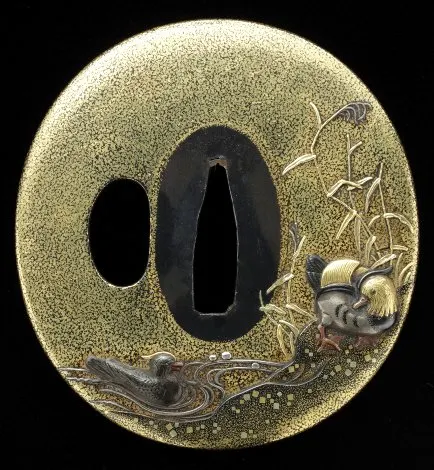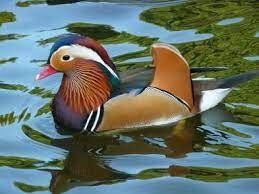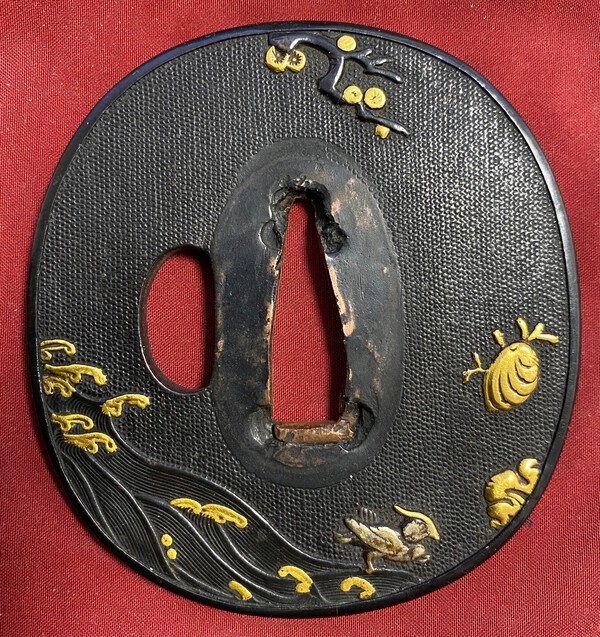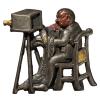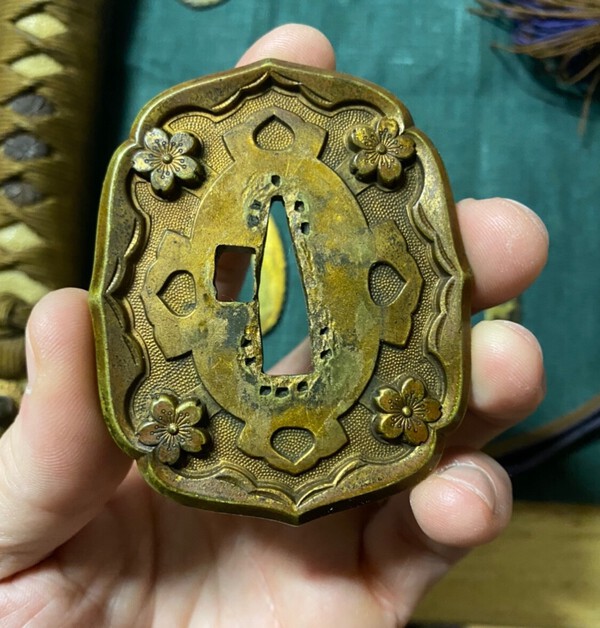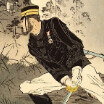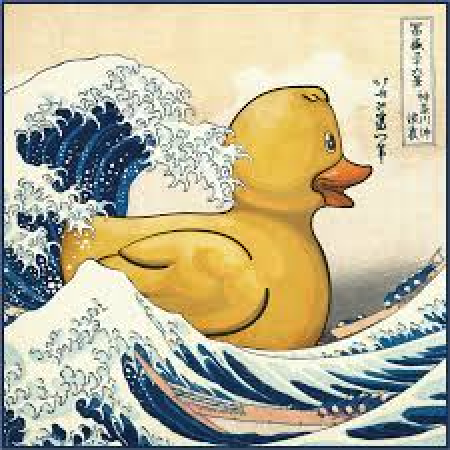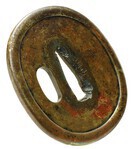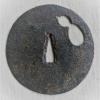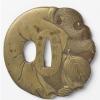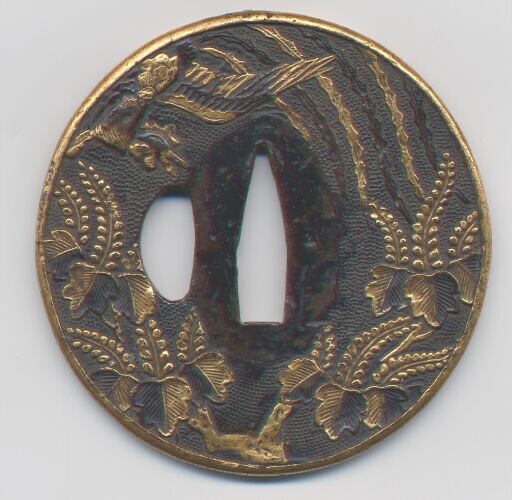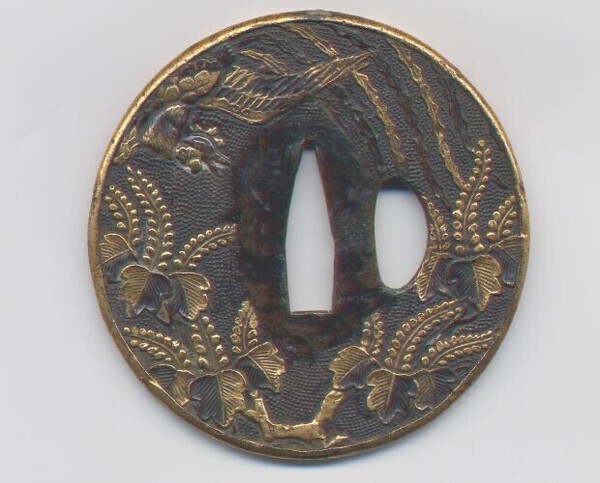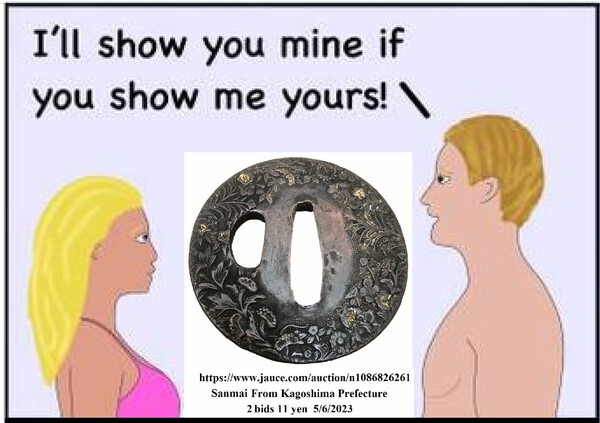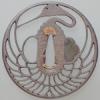Leaderboard
Popular Content
Showing content with the highest reputation on 03/17/2024 in all areas
-
5 points
-
4 points
-
3 points
-
I pulled a few swords from the cupboard tonight to inspect and enjoy. This KANETOSHI (Murayama) Star Stamp, July 1944 in late war RS mounts always demands attention. In WW2 polish, the hada and hamon in Ichimonji style JUKA CHOJI, is like viewing a nice piece of art, something new always catches your eye. For Bruce's benefit, I tried to do my best on the MUNE stamps. I have probably posted photos before, but my new phone camera and LED lights show much more detail. If I had the time and money, this sword would be a prime candidate for a touch up polish.3 points
-
My first Nihonto. It’s nothing special but I’m proud to be its custodian. I purchased it from Aoi Art in Japan. Im just a baby in the world of Nihonto and thought I’d jump in and buy early in my journey to learn from a blade in hand. Open to comments and opinions.2 points
-
Stumbled across this blade, think its cool. Vaguely remember seeing circles within the choji before but never so intentional, 2 near the kissaki and 2 further down on opposite sides of the blade. Sometimes you just come across something different, interesting, nice blade. For those interested. Japanese sword Touken Komachi, Tanto, Shirasaya Hakushu ju Yoshinaga2 points
-
To me its nothing, If it were mine you not be getting that kind of price drop Surprising what you can find if you look hard enough, even when you think a sword is perfect, one of your own. Handmade after all.2 points
-
2 points
-
2 points
-
The iron of Adam's tsuba above looks ok in that shot to me too. If a Mei has been under a slightly moving/rubbing seppa for many long years, it would certainly lose some of its sharpness like that.2 points
-
2 points
-
2 points
-
2 points
-
Hello everyone. I have a question on the yoroi-doshi tantos: I do realize it's the mune that is thick, but has anyone seen shorter length ones...as in 6.75 inches (nagasa)?1 point
-
Hi All, This tsuba is from my latest sword buy, Would be nice to try and identify it. As I know very little regarding tsuba, Could I please ask for a little help? Material - soft (Copper?) Width - 2.5" Height - 2 7/8" Subject - I believe it is a heron over waves with sea shells. The nanako isn't the best I've seen. Thanks in advance.1 point
-
If this is going to be your first sword, for study purposes, I would recommend picking up something in good polish, so you can see the blade.1 point
-
Another pervasive surface hack used on iron pieces like yours is the dreaded "brown wax". A lot of material coming out of Japan these days suffers from this and sometimes the wax is laid on like putty to hide a multitude of sins. you can use some high test isopropyl alcohol on a q-tip somewhere inconspicuous, and if it comes off brown... Clear wax over a good surface with no active rust is a personal choice (and it does make a lot of pieces look better), but the hackers often use the brown stuff to hide active rust issues, deep pitting, areas of corrosion (that look like sandpaper), cracks, even out botched repatination, etc. This is bad because the corrosion continues under the surface - wax is permeable and the rust can still get what it needs to continue reacting. The sad part is that sometimes they'll use the brown wax even when there's nothing to hide - just as part of their rework process - I guess they think it makes the piece look better And.. you often can't just clean it off because it opens a whole can of worms to try and conserve the result. Best, rkg (Richard George)1 point
-
Hi Henry, I once had a Yoroi-doshi tanto that had a nagasa of 6.47 inches or 16.4 cm. The moto kasane was 0.340 inches or 8.6 cm. It was signed Omi (no) Kami TsuguHira Tsukuru. The mei did not appear to be that of the first two members of this family, but the workmanship of the nakago certainly matched that of this family of smiths. I was never able to find a match for the mei and assumed the blade was signed by a later generation. So, yes, shorter yoroi-doshi tanto do exist.1 point
-
1 point
-
The sword should be pointing with the tip up. (Otherwise the signature is upside-down). 越前住日向守藤原貞次 The translation is mostly correct: Echizen-jū Hyuga-no-kami Fujiwara Sadatsugu 日向 can also be pronounced "hinata" in some cases, but in this case it is a certain location, pronounced Hyuga. There are no less than three smiths who signed using this name and title. I don't know which one signed this. Could also be a forgery, as forgeries are very common in the world of Japanese swords. More pictures of the sword might help. The fittings are a hodgepodge of antique, samurai-style fittings, and a wartime leather scabbard: interesting, but not nearly as interesting as the sword itself will be.1 point
-
Fittings from my type 98. Pretty sure it’s a “piece together”, as the saya might not match, and the unique home-made looking seppa shown in the photos. The other 6 seppa appear original, and two of them are pretty thick. Open to opinions. Has anyone seen a tsuba like mine? With the notches hammered in around the nakago ana? Was this done to fit the tsuba to the blade? Sharing to contribute to the thread, but also for the tsuba question. All the best! Happy St Patrick’s day, -Sam1 point
-
1 point
-
the whole sword is a dream and completely and survived in great condition the Gassan blade leaves nothing to be desired, in over 30 years of collecting, I've never been able to secure anything comparably more beautiful1 point
-
by the way: the sword's story that it was presented to Kaiser Wilhelm is fictitious it was found by a Dealer named Manfred Winter from Bremen, who unfortunately has already passed away now He asked me about the headind of the kanji and offered it to me for a lot of thousend euro's unfortunately I wasn't able to pay his price to be continiued...............1 point
-
Genuine cutting tests should be carefully and beautifully inlaid with gold, not drawn on with a gold marker!1 point
-
Always find their prices ok Chandler. For the money the tanto seems fair This aint a sales pitch though, just like what i see We all have different tastes and budgets. For someone wanting a bang for their buck, for me this would be it. Yet some would rather spend their money on some unsigned koto pure foggy hamon tanto Perhaps someone looking to buy a Shinshinto Sukekane, Sukenaga or whatever may see this as a plausible and acceptable alternative, i would Horses for courses.1 point
-
1 point
-
Thank you Spartancrest that's exactly the kind of thing i'm looking for. Thanks for the help. I had looked for that tsuba on Jauce a week or so ago and I didn't see it. Odd that it's an auction and not buy it now. I've been thinking about making a purchase there but I'm not at all clear on what it'll actually end up costing me to ship it back to Ohio. That skull tsuba was actually one I was looking at and was warned away by someone based on the color of it. Other than that I really couldn't get any input on it1 point
-
1 point
-
With the additional pictures i would also say it is old and shortned. Really nice find.1 point
-
This is truly a magnificent hamon! A question I would like to ask is what are the characteristics of a wartime polish? I find it hard to distinguish between what is WW2 polish and what could be termed a post-war amateur polish.1 point
-
1 point
-
You can ask Polish collectors (there are a few) but generally it can be: 1. Japanese are always afraid of something and use any possible excuse to not do something because "its absolutely forbidden". Often its not. 2. For postal service you need a direct flight from Poland. As I think there are none over Russia, I don't think they exist at all. Closest country with a direct flight is probably Germany or Netherlands. Without direct flights swords are problematic. 3. FEdex and UPS can carry swords but only if a dealer has a special contract with them.1 point
-
I think once you have that guard in hand you will be very happy with the patina, photos can sometimes give a deceptive pale look - add my vote for original patina, well cared for and very old. If you want to compare artificial patina you can check out this auction site https://www.jauce.com/user/dj2hmyuc this guy's stock is made yesterday and has that oily black finish you will get using that "colour-enhancing rust preventive agent" found here. https://www.jauce.com/auction/l1126749580 Both the modern backyard tsuba and the artificial patina can be found on ebay as well. https://www.ebay.com/itm/386829157016 https://www.ebay.co.uk/itm/386845822320 https://www.ebay.com/itm/254728433191 I would not recommend any of this stuff used on antique tsuba. By the way that same guard you are looking at for $133 USD is also selling over on Jauce https://www.jauce.com/auction/c1128842948 or Buyee https://buyee.jp/ite.../auction/c1128842948 at a starting price of $6.71 USD - it pays to shop around! Signed "Tetsujin" For comparison of the mei you might find something here? https://www.militaria.co.za/nmb/topic/12900-tsuba-mei/1 point
-
Dustin - Dan C DTM72 on this forum is offering to submit swords for folks who cannot go. See below "I will have a table at the show, but mainly display. Since I won't be too busy at my table, I would like to offer my service for shinsa to those who cannot attend the show/shinsa in person. This is how it works; Your item or items will be mailed to my home address, at least 1 week prior to the show. (sooner is better). You are responsible for the packaging and mailing of the item(s) to me. When you are shipping from your preferred shipping place, pay for the shipping, and pre-pay for the return shipping label. Add this label to the insideof the package prior to sending. If you pre register, please include a copy of the registration and any reply from the NTHK for subimssion times. https://nthkamerica.com/registration For swords and koshirae, the initial fee is $200 for me to complete the registration for you, or $100 if you have pre-registered and paid directly to NTHK. For tsuba and kozuka, kogai, kozuka, menuki, the initial fee is $125 for me to complete the registration for you, or $25 if you have pre-registered and paid directly to NTHK. My fee covers; Initial registration of the item(s) for shinsa submission <-- does not apply if you have pre-registered Receipt and safe storage of item(s). Notification and pictures will be provided to owner upon receipt. Transportation of item(s) to the show. (driven in a large SUV, no aircraft involved!) Preparation of item(s) for submission. Delivery to the shinsa team. Receipt of the item(s) from shinsa. Preservation of item(s) and re-packaging for return shipping. I will send photos of the worksheet to owner prior to item re-packaging. Worksheet(s) will be included in the packaging with the item(s). Transportation of re-packaged item(s) to shipping company, and tracking information provided to item owner. If the item(s) pass shinsa, that will be an additional $150 fee for the origami, for each item. This can ONLY be paid in cash on the day of submission. Include a check, payable to me, for the $150 and I will pay cash on your behalf at the show. if your item does not pass, I will return your uncashed check with your item. If you have any additional questions, please message me!"1 point
-
What problems do you see and where? Usually, a TSUBA will look different in hand, compared with a photo. The guard looks like a basic GO ISHI GATA TSUBA, even signed. A faint MEI is nothing to worry about, it's a question of individual chiselling style and age. Nothing wrong with it in my eyes (but they are no longer very good).1 point
-
1 point
-
1 point
-
1 point
-
No such thing as a 'spot polish'. If a sword is to remain in good health with crisp geometry, then a full polish is done.1 point
-
1 point
-
Very personal opinion: Wakimono are often quoted as being a problem for gokaden, but I don't feel that way. Many if not most of these schools were founded as provincial, Yamato-based shops, around 1300 or so. Attributions to these schools tend to be "soft" and are often attributed differently by different shinsa, but they are more or less all within the same class - 1300 to 1400, provincial work. Provincial school make a comeback around 1510, and with basically similar issues. The bigger problem is that Bizen, for example, being the largest workshop of the land, from time to time forged in every possible type of hada and almost every hamon known in Japan. There are ko-itame, itame with nagare, mokume, masame and even matsukawa-flavored examples. There are suguha in nioi, ko choji, choji in nioi, choji in nie, midare or gunome in either nie or nioi. There are blades that look like Rai Kunitoshi, Yamato Taima and whatever else. Kantei-ing these 1100-1300 blades can be a nightmare, especially as we outside of Japan are relatively seldom exposed to those. You can substitute such details with something along the lines "Bizen is choji in nioi with itame hada" and that's going to match roughly 30% of Kamakura examples and probably as high as 70% of Muromachi. And then you put Tomonari, Ayanokoji, ko Aoe, Rai Kuniyuki next to each other and it sort of dawns on me (don't know about others) - these people must have known each other's work more than just a bit. Some of it does converge towards the same kind of aesthetic, which is period rather than region based. Same way you have later Nambokucho blade, and you can have heavily Bizen leaning Sa or strongly Soshu leaning Chogi or even some Kozori signed piece - and you clearly see they were influenced by the same, period-based, Soshu-Bizen aesthetic.1 point
-
I would say gokaden is nearly as helpful as it is confusing. First and foremost, roughly half of the blades currently on the market are shinto. Which is, except for Ishido Bizen and a few other subschools, is a tradition of its own. The sixth tradition. So you have a classification which is from the get go fails with half the blades. But it does not get any easier as you go into details of what should be describable by gokaden. Pre-mid-Kamakura blades, no matter which school they are, ko Bizen, Yamashiro or Yamato can look quite similar. Many will belong to subschools which are not clearly gokaden - like Aoe and ko Hoki. Even though ko Hoki often looks more like "mainstream" Yamato compared to, say Hosho. And Hosho school never had mainstream-like Yamato signatures, its not clear if it was in Yamato region, it has a well defined style of its own - but its in the old tables as part of five mainstream Yamato schools, so it is there. Rai Kuniyuki forged most of his blades in wide, nie filled hamon, which can be mistaken for Bizen Tomonari , but is completely incomparable to almost anything ever done in later Rai and Awataguchi, i.e. the works which sort of define Yamashiro style as it is. Soshu tends to include Awataguchi smith Shintogo Kunimitsu, whose works were never mistaken for any single blade produced by anyone else within Soshu school, but can exclude Shizu Kaneuji, on account of him going Mino. Hasebe, who is very central to Soshu, is often instead delegated to Yamashiro, on account of him having Yamashiro-lineage name. Gokaden is blood/province oriented classification. It fails utterly in shinto, when style dominated over blood. It fails with ancient swords, which were all forged in rather utilitarian style, which has rough itame-nagare hada and rough nioi with elements of nie hamon. It mostly fails at the time when everybody was trying to be Soshu. It constantly includes things that are not really that similar - Yoshii, Unju and Osafune under the umbrella of one "Bizen school", while sending works of exceptionally similar smiths to different schools because their blood is unrelated. In reality if you want to understand Koto you need to get accustomed that there were about 25 more or less prominent schools/lineages, each of which cannot be completely defined by gokaden. Even if it resided in Bizen or Yamashiro. Ayanokoji usually does not look like Rai Kunitoshi. If you want simplification, there were only 4 styles which were constantly imitated throughout Japanese history. Ichimonji, Soshu, Rai Kunitoshi/Awataguchi and Yamato Tegai Kanenaga. If you understand 4-10 masterpieces from these traditions, you can understand 50% of nihonto aesthetic.1 point
-
1 point
-
Han Bing Siong was an amazing scholar, I would have liked very much to meet him. His article might be the first time I ever see mentions of Shintō and Shinshintō Hoshō. I tend to think Kunikane and Norikatsu individual smiths rather than part of the Hoshō lineage. Of course workmanship for both shares characteristics commonly associated with Hoshō school work. There are different ways to "group" up smiths and schools under larger categories. Gokaden is one of them. I will add a quote about gokaden from Nihon Kotō-shi by Honma Junji Personally I like to go with regional groupings. To me it just seems most logical approach going by geography, although when for example smith changes residence it can make things difficult. For Kotō swords there is kinda logical approach in going through the provinces in a certain way, you can see this for example in NBTHK Jūyō results (similar approach applies to later items as well). Now if you take Yamato from Gokaden as an example. Generally there are the five main lines of Yamato that worked within the province, Senju'in, Taima, Tegai, Shikkake and Hoshō. However there are many schools that are heavily influenced by this tradition. For example in his Gokaden no Tabi Yamato book Tanobe-sensei includes Uda (宇多) [Etchū province], Naminohira (波平) [Satsuma province], Fujishima (藤島) & Asago-Taima (浅古当麻) [Echizen and Kaga provinces], Mihara (三原) [Bingo province] and Niō (二王) [Suō province]. Now for example as I go with regions I would approach these by the province and would group them by those but someone going with traditions/work style might group them together like this. I just listed the provinces in [] brackets as these schools worked in various parts of Japan. I think it is quite interesting subject as people will have different types of approach into things. So it is fun to see various views on things.1 point
-
The concept of the Gokaden was, if I'm not mistaken, developed in the 19th century as a way to classify Koto sword smithing. A smith working during Koto times didn't know he was part of 1 of 5 different traditions. And then when Tokugawa Iyeyasu came to power and unified Japan under one government late in the 16th century, he shuffled the country. He realized that if he left Japan as it was, feudal Daimyo who hadn't been as supportive as he would have liked would retain their positions of power with armies, alliances, suppliers, and more, and could be troublesome. So he moved them around, forcing Daimyo who had existed for centuries in one spot to relocate to another. When the Daimyo, who were important customers for swordsmiths moved, many smiths moved as well. This disrupted traditions and forged new alliances in smithing: lots changed. Also, with the unified country and a near total cessation of warfare, swords took on a different significance. They had always been weapons and the best of them were objects of status but, in Shinto, status became more important; swords were made as much to be items that would impress the owners' associates as to be impressive weapons. New styles and techniques developed; there was a significant shift away from tradition. All of which is to explain why you can't easily draw lines from Koto into Shinto. And let me add, This is my understanding but I'm not a historian. I may have this wrong and if I do I hope I will be corrected. Grey1 point
-
Wow, Peter. I would bow if we were in person. I will have to take some time to really think about your post, but I believe I begin to understand what you are saying. I believe I have been thinking of schools in too literal and linear of a sense when it comes to schools.1 point
-
Dear Jason, You are being laudably responsible in becoming a Japanese sword collector. Good on you!. Please let me try to help you by asking you to think about plywood, - that is 1) a material made of a bunch of thin layers of wood. It can vary 2) based on the kinds of wood that were used, and 3) the ways they were attached. And 4) you have to remember that plywood always has two sides – the stripes and the flat. ( it is tempting to call those masame and itame, but it is a bit different) Beyond all that, you also have to realize that 5) plywood has been used in lots of different ways, by craftsman 6) in many different areas and styles. So what do you do when you find a great Eames chair that a used furniture dealer is selling as a “Plywood Seat”? Do you argue with her? Do you question your understandings and tastes? Or do you say, “I like it, but can you do any better?” The gokaden was a way of classifiying Japanese sword making procedures before 1250 or so. To begin with those procedures were routine and supported by rather narrow tool kits and local resources. Basically, they were like slightly different ways of making plywood. Then, by about 1400 or so, mixing and reorganization and increased demand had begun. And so, smiths in different AREAS developed differences. They used established techniques, but developed distinctive ways of making effective weapons – call them regional styles. Soldiers in those regions got used to those weapons, And so you get things like “Hokuriku style” That usage is like talking about a “Kentucky Rifle.” Then you have to understand that in Japan, you learn a skill by entering into a close relationship with a social superior. These situations can be called SCHOOLS because the boss teaches you how to operate and he exposes you to a narrow and specific set of 1) skills and 2) tools. This means what you learn is narrow and specific. It is about how to behave NOT how to innovate. After the late 1500s there was great persistence in several of these schools. They were all making plywood, but by that time the medium and the techniques had changed a great deal… Let me also speak to Kunikane. He claimed to be a descendent of Yamato smiths, but I can’t understand how that could have been. And furthermore I do NOT think there is a gene for blacksmithing. I think he was a GOOD smith who figured out how to do masame. He also seems to have been a good local citizen. He earned the support of rich guys in his hometown. And he started an enduring “school” that lasted like 14 generations in Sendai. The second Iyesada was a student of Kunikane, but the swords he made, and those by his son and grandson don’t look TO ME like the swords that Kunikane produced. Peter1 point
-
1 point
-
1 point
This leaderboard is set to Johannesburg/GMT+02:00

